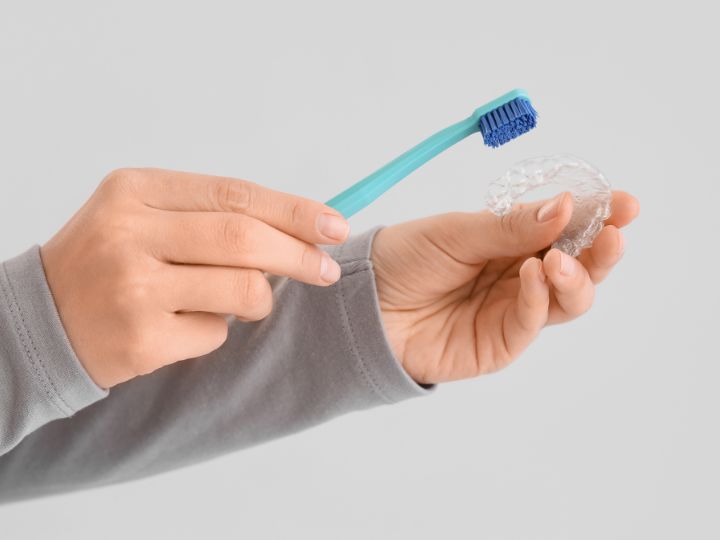Nylon splints are a popular and effective tool used in orthopaedic support, injury recovery, and even in dental and hand therapy. Known for their flexibility, strength, and durability, nylon splints offer both comfort and stability for individuals recovering from various conditions. However, like any personal medical device, they require regular cleaning to maintain hygiene and effectiveness. Unfortunately, improper cleaning methods can damage the splint, compromising its function and longevity. In this article, we’ll explore the best cleaning tips for nylon splints to ensure they remain in good condition while staying safe and hygienic.
Why It’s Important to Clean Nylon Splints
Whether you’re wearing your splint for a few hours a day or nearly 24/7, it’s exposed to sweat, skin oils, dirt, and bacteria. Over time, this can lead to unpleasant odours, skin irritation, and even infections if the splint is not cleaned properly.
Regular cleaning not only improves hygiene but also helps extend the life of your nylon splint. However, care must be taken not to warp or weaken the material during cleaning, which is why knowing the correct process is crucial.
Basic Cleaning Tips for Nylon Splints
Here are some safe and effective cleaning tips for nylon splints:
1. Hand Wash Only
Always wash nylon splints by hand. Washing machines or dishwashers may seem convenient, but the high temperatures and harsh spinning motions can warp or weaken the nylon material.
- Fill a basin or sink with lukewarm water (not hot).
- Add a mild, non-abrasive soap or detergent.
- Use a soft cloth or sponge to gently scrub the splint, paying close attention to creases or joints where dirt may accumulate.
2. Avoid Harsh Chemicals
Never use bleach, strong disinfectants, or alcohol-based cleaners on nylon splints. These substances can degrade the nylon fibres, making the splint brittle or discoloured.
Instead, opt for a gentle antibacterial soap or a solution of water with a small amount of vinegar if odour is an issue.
3. Use a Soft-Bristled Brush for Deep Cleaning
For splints with textured surfaces or areas that are hard to reach, a soft-bristled toothbrush can be used. This allows you to clean thoroughly without damaging the nylon.
Brush gently and avoid applying too much pressure, especially near any joints or straps attached to the splint.
4. Rinse Thoroughly
Once cleaned, rinse the splint thoroughly with clean water to remove any soap residue. Soap left on the splint can irritate the skin or attract more dirt over time.
5. Air Dry Completely
Drying is just as important as cleaning. Always air dry your nylon splint—never use a hairdryer, clothes dryer, or place it in direct sunlight, as excessive heat can warp the nylon.
- Lay the splint flat on a clean towel.
- Allow it to dry in a well-ventilated area out of direct sunlight.
How Often Should You Clean Nylon Splints?
The frequency of cleaning depends on how often and how long the splint is worn. As a general guide:
- Daily use (all-day wear): Clean every 2–3 days.
- Occasional use: Clean weekly.
- After sweating or exposure to dirt: Clean immediately.
Consistent maintenance not only improves hygiene but also makes the cleaning process easier, preventing build-up that can be harder to remove later.
Extra Hygiene Tips
In addition to regular cleaning, here are some added tips to keep your nylon splints fresh and hygienic:
- Use a liner or cloth barrier between the splint and your skin to absorb sweat.
- Wipe down daily with a clean, damp cloth if a full wash isn’t needed.
- Store properly when not in use – keep the splint in a clean, dry place away from moisture and dust.
What to Avoid When Cleaning Nylon Splints
To prevent damage and ensure your splint continues to function properly, avoid the following:
- Soaking for long periods – prolonged soaking can weaken adhesives or attached straps.
- Using abrasive pads or rough sponges – these can scratch the nylon surface.
- Hot water – heat can cause the nylon to deform.
- Skipping the rinse – leftover detergent can cause skin reactions.
When to Replace Your Nylon Splint
Even with proper care, nylon splints won’t last forever. Watch out for signs that your splint needs replacing:
- Cracks, tears, or deformities in the nylon.
- Persistent bad odour even after cleaning.
- Loss of shape or support function.
If you notice any of these issues, consult with your healthcare provider or therapist for a replacement or adjustment.
Summary
Keeping your nylon splints clean is a simple but essential part of your recovery or support routine. With the right approach, you can maintain hygiene without compromising the durability and comfort of your splint. Remember to wash gently, avoid harsh chemicals, and dry naturally to extend the lifespan of your device. By following these cleaning tips for nylon splints, you ensure not only the longevity of your splint but also protect your skin and overall health. Regular care goes a long way—so make it a part of your routine, and your nylon splint will continue to serve you well throughout your recovery journey.






